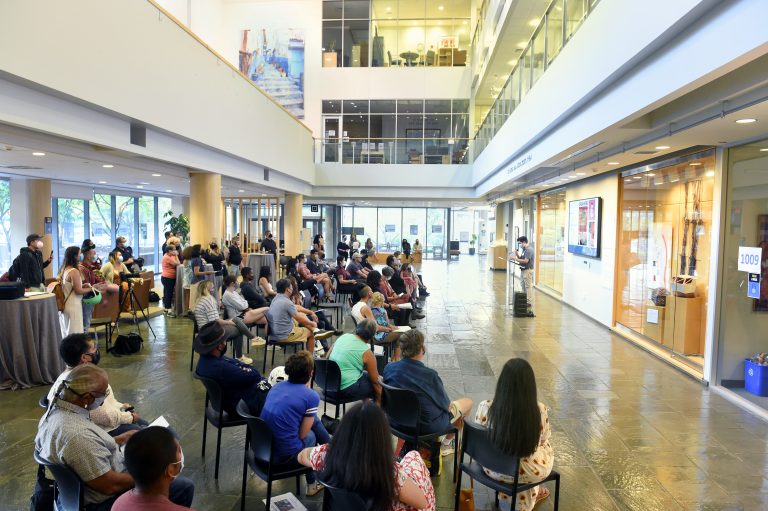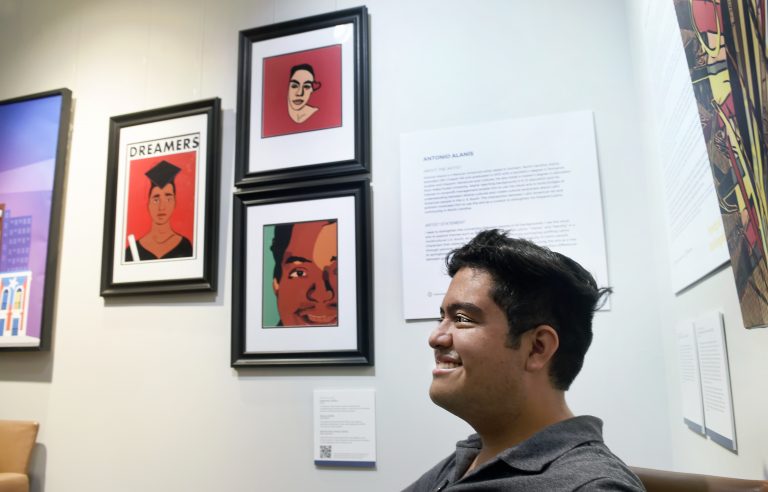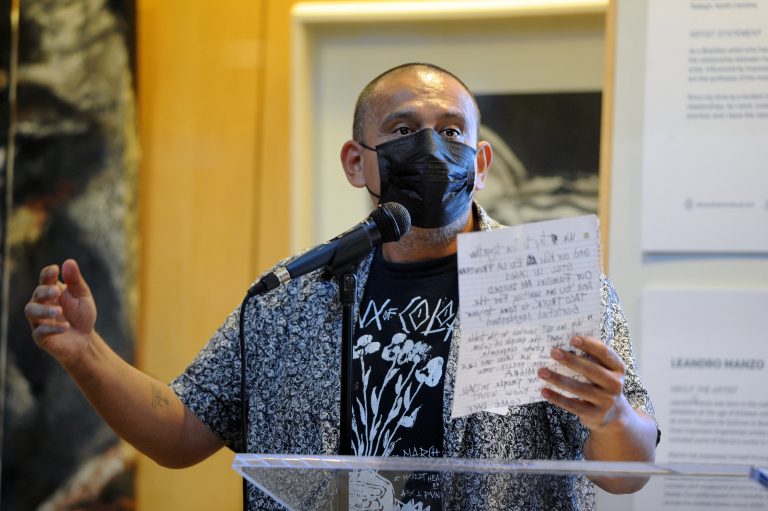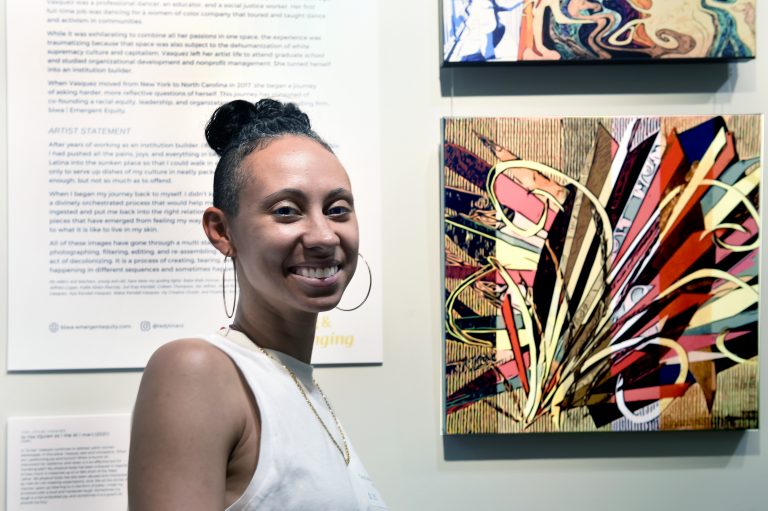NC Artists of Latin American Heritage Reflect on Identity, Diversity in ‘Being and Belonging’ Opening
Content originally published by UNC Global. Available on their website here.
Thirteen North Carolina artists of Latin American heritage discussed themes of belonging, equity and climate at the Oct. 5 opening celebration of the art exhibition Being and Belonging: Perspectives in North Carolina in the Florence and James Peacock Atrium at the FedEx Global Education Center.
Being and Belonging features more than 25 works ranging in theme, medium and tone, and celebrates the diversity of Latin American heritage. The artists draw inspiration from Mexico, Puerto Rico, Argentina, Brazil, Colombia, Peru and Afro-Caribbean cultures. At the same time, their own voices shine through.
In their remarks, many artists touched on the realities of a complex, multicultural South and the ongoing struggle for social justice and equality.
“I am here to counteract negative narratives rooted in racism and ignorance,” said Antonio Alanís, a 2013 Carolina graduate. “I create my artwork not only to counteract these narratives but also to use art as springboards for conversation that facilitate talks around diversity, equity and inclusion. I am here to talk about the importance of using art as a vehicle for social change.” Alanís’s full speech is available to read on his blog.
Renzo Ortega’s works reflect indigenous histories and the realities of immigration. Ortega touched on these themes in his poem Diversity, which he read during his remarks. One excerpt reads:
“We try to live together / and our kids -en la Frontera- still in cages / our families are divided / and you are waiting for the Taco-Truck / to come to your gentrified neighborhood.”
Other artists reflected on their personal journeys. Being and Belonging is the first professional exhibition for graphic designer Alexander Lee Quiñonez. “For me, this has been the ability to kind of lose myself in the work and not for anybody else—for myself,” he said.
Tina Louise Vasquez described the process of creating her intricate collage works.
“When [the pieces] came together, it’s almost like it was telling me something about myself [that] I was afraid to engage with,” she said. “And all the narratives to the pieces were these deep dark secrets that I was now uncovering.”
Peter Marín, who spoke of the influence of his father’s architecture on his own work, was joined by his young daughter. As they took the stage together, Marín spoke about the importance of family, community, and the inter-generational power of art.
Leandro Manzo, who delivered his remarks in Spanish, believes it is the artist’s role to explore universal questions about identity, such as “Where do we come from? Where are we going? Who are we? Where does life come from?”
The voices of these 13 artists from across the state of North Carolina speak together in this exhibition—celebrating Latin American heritage and addressing the complexities of being and belonging.
The exhibition, organized by UNC Global in collaboration with the Institute for the Study of the Americas, will be on display through Dec. 12. Additional support is provided by Arts Everywhere, Department of Art and Art History, Latina/o Studies Program, Curriculum in Global Studies and the Carolina Latinx Center. The artists featured in the exhibition are:
Antonio Alanís, Durham, NC
Tina Alberni, Huntersville, NC
Adriana Ameigh, Raleigh, NC
Georges Le Chevallier, Garner, NC
Gabriela Costas, Winston-Salem, NC
Alexandre Emmanuel, Raleigh, NC
Lina Fernández Giraldo, Greensboro, NC
Gloribel Irizarry, Winterville, NC
Leandro Manzo, Charlotte, NC
Peter Marín, Raleigh, NC
Renzo Ortega, Carrboro, NC
Alexander Lee Quiñonez, Durham, NC
Tina Louise Vasquez, Chapel Hill, NC





